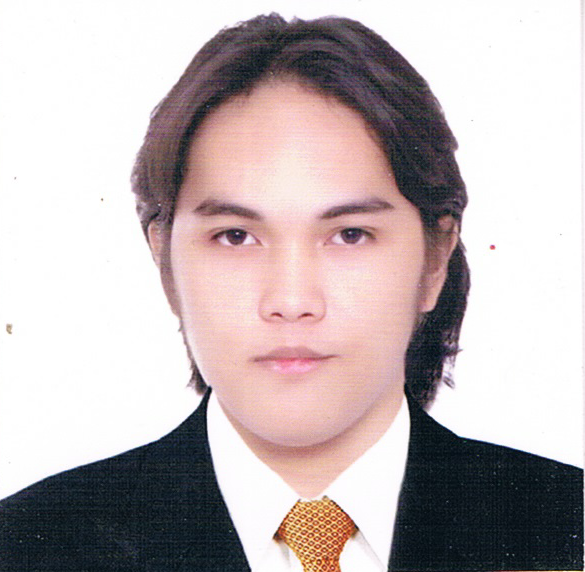Independent business owners can use this 5-step sales process to refine your approach to reaching and booking more qualified potential clients.
The sales process is essential to business, not just because it’s the direct pipeline to revenue. It’s also where you and your new clients interact directly. With a successful process in place, it sells your services just as much as your brand experience. This is why it’s a huge step in the right direction to put a formal sales strategy in place to standardize and improve how you gain new clients.
The sales process is a series of steps that brings a potential buyer from early awareness to closing the sale. Usually, it consists of five to seven steps. Fewer and leaner steps are more favorable for independent businesses, especially if you’re the only one managing your sales.
This article will discuss a five-step sales process better suited for small to mid-sized organizations. It can help you rapidly and effectively book clients.
Jump to:
- Generate leads to filter through your sales funnel
- Qualify leads to bring them closer to conversion
- Nurture leads to action
- Introduce services and pricing at the right time to the right leads
- Close the deal
- Turbocharge your sales process with HoneyBook
1. Generate leads to filter through your sales funnel
Business owners know the key to a successful business is a healthy stream of new clients. But how do you get them? It starts with generating leads and creating interest in your services. Lead generation helps you find potential clients and build relationships with them. It’s important because it increases sales and revenue for your business. Plus, if done right, it helps you get repeat customers who are essential for long-term success.
Think of lead generation as fishing. You’re trying to attract attention from people who might be interested in what you have to offer (the fish). Once you’ve got their attention, you need to reel them in (convert them into leads) to close the deal (make a sale).
According to HubSpot, most marketers say generating traffic and leads is their top priority. Indeed, around 15% measure their content campaigns by how many leads are created, reflecting the importance of lead generation.
A lot of what you’re already doing within your marketing strategy can be used to generate leads. Consider the following strategies:
- Content marketing – Create content for your company blog that includes lead magnets, or develop whitepapers and ebooks that you can link from landing pages.
- Advertising – Test paid ads that include contact forms so you can reach your audiences more quickly. Use offers like discounts, limited-time webinars, lead magnets, and more.
- Social media – Promote your lead magnets by teasing the content on social. Try to tap into trends so you can get in front of a bigger audience of potential leads.
- Networking – Use your current clients to generate referrals, or develop an event strategy where you can show up directly to potential clients.
2. Qualify leads to bring them closer to conversion
Of course, generating leads is only the first step to an effective sales process. When identifying potential clients for your service, several factors determine whether someone is a qualified lead. The most important thing to remember is that a qualified lead is someone who has the potential to become a paying client.
Some common methods to qualify leads include:
- Assessing demographic information: Do their age, gender, and location match your ideal client profile?
- Considering brand engagement: Are they visiting your website regularly? Have they subscribed to your newsletter?
- Evaluating their budget and timeline: Do they have realistic budget and timeline goals for what you can offer?
So in a straightforward process when qualifying a lead:
- First, take a look at the information about your lead. You can capture their details in a client background questionnaire or an initial call where you ask discovery questions. Using that info, check if they fit the profile of your ideal client.
- Second, consider if they’re engaged with your brand. Maybe they frequently visit your website or app. If so, that’s a good sign they’re interested in your offer.
- Third, consider whether they expressed interest in becoming a paying client. Maybe they signed up for a free trial or requested more information about pricing plans. If someone takes one of these actions, it’s likely they’re at least considering making a purchase from you down the line.
- Finally, consider any budget constraints they may have. For example, someone might be interested in purchasing but hasn’t yet saved enough money. If so, now isn’t the right time to do a hard sell; just keep them engaged with valuable content and check back with them later.
3. Nurture leads to action
When you want your leads to do something (sign up, buy now), do you think it’s better just to give them a form to fill out or a button to click? Or do you want to build rapport and persuade them that it’s worth signing up for or a great buy?
In the sales process, this is called lead nurturing. It’s developing your relationship with potential buyers by building trust, establishing that you’ve got what they need, and giving them relevant information and resources to make an informed decision about your product or service.
For business owners who work closely with their prospects and clients, it’s best to use a leaner lead nurturing effort to persuade your leads:
- Create compelling content. Create content that speaks directly to the needs and interests of your leads. This could include blog posts, eBooks, infographics, case studies, webinars, etc. The goal is to provide value and build trust so that leads will want more from you down the road.
- Develop a content delivery strategy. Will you use email, social media, or both? Identify the channels your leads actively use and consistently deliver valuable content there.
- Measure results and optimize. Track how your campaign is performing so that you can make necessary adjustments. Are people engaging with your content according to your social media likes and shares? Are they asking questions that appear as though they’re getting close to deciding to buy? A simple spreadsheet can give you some useful insights, but if possible, make use of free tools such as Analytics and the dashboards of your social media channels. These can give you concrete data and determine what works and doesn’t.
You can use a series of sales email templates to deliver your content over time. Be strategic about the cadence and type of content. If you’re nurturing new leads, you might not want to offer a sales pitch right away. Instead, you can offer content that shows you’re an authority in your field. You’ll build their trust over time so you can eventually convert them with greater success.
4. Introduce services and pricing at the right time to the right leads
It’s typically best to introduce services and pricing after you’ve built some rapport and better understand your leads’ requirements. This way, you can tailor your sales pitch to them instead of giving a generic overview. Plus, if they seem interested in what you’re offering, they’ll be more likely to want to know how much it will cost.
It’s a waste of time to try and pitch to leads who probably aren’t keen to buy from you just yet. They haven’t built enough interest. You might be just as likely to turn them away with an aggressive approach if the timing isn’t right.
So when exactly is the right time? That’s different for everybody. It depends on the situation and your relationship with your potential client. However, it is usually appropriate to hard sell a potential client when there has been significant interaction and engagement between them and you. Or, if they’ve expressed enough interest to be considered a qualified, warm lead.
In other words, it’s time to sell when it’s clear that there is genuine interest in purchasing your services. But that also means you get to define when this right time is, and define what that looks like so you can more easily identify when other leads are at that stage in the future.
Look back at the leads you’ve converted in the past. Where did they find you (what was their lead source)? How long were they on your email list before they decided to purchase your services? These answers can help you put more structure behind your timeline for selling.
5. Close the deal
Closing a sale sounds more straightforward than it is. When you close a sale, you finish the transaction and ask the client to pay for the service. This usually happens after you’ve gone through all of the steps in the sales process—identifying needs, building rapport, presenting solutions, and handling objections.
There are several ways to try and close a sale:
- Assumptive close. Assume that the client is going to buy from you. For instance: “Now that we’ve discussed everything, shall I go ahead and get your credit card information?”
- Question close. “Based on everything we’ve discussed today, do you think our XYZ solution would be right for your company?”
- Trial close. Check in with clients throughout the presentation to ensure they’re still following along and interested in what you’re saying. “Does that make sense so far? Any questions before we move on?”
Which method you choose will depend on factors like your relationship with the prospect and their level of interest up until this point. The important thing is to sound confident without being pushy. Remember that ultimately, it’s up to them.
Pro tip
Always offer value throughout the sales process, especially during closing. Hit them with your best promos and discounts, where applicable, and always brand your approach.
Turbocharge your sales process with HoneyBook
HoneyBook is a clientflow management platform that is designed to streamline the entire process that independent businesses use to sell their services, from lead capture to project closure. HoneyBook lets our members customize files to their needs and include sales videos, photos, questionnaires, a customizable online invoice, contracts, and more, and allows you to get paid directly through our online payment software. Everything is fully branded to match your business, and each file can be dynamic and interactive, depending on your needs.
HoneyBook’s templates are meant to improve your sales processes. The files are dynamic, so information filled out by clients on one page is carried over seamlessly to a contract, proposal, or any other file type. For increased engagement, you can also drop in photos and videos.




